#latinx writers
Welcome to the last post of the month. First of all, I’d like to thank all the amazing authors for taking time to be part of this series. I was afraid I wouldn’t be able to find enough authors to fill in the month. But we did more than that, and hopefully next year we will be back and better than ever. I hope you enjoyed discovering new voices.
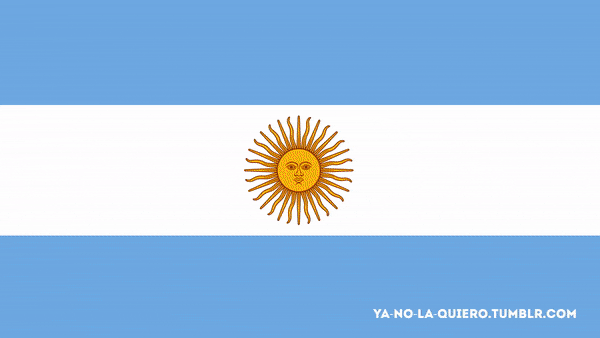
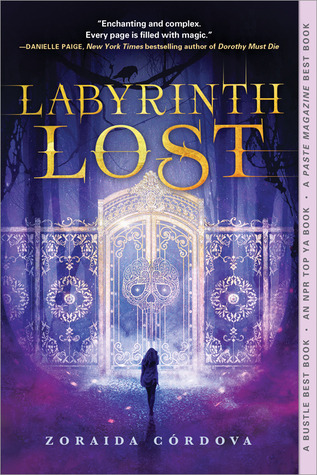
¡Qué bonita bandera! AKA what heritage(s) do you claim?
I was born in Guayaquil, Ecuador and I was raised in New York City. I am 100% Latina and 100% New Yorker.

When was the first time you saw yourself represented?
To be honest, I still haven’t. Not in the sense that I’ve seen an Ecuadorian girl starring in a novel or movie. When I was a teen and found out Christina Aguilera was half Ecuadorian, I wished she could represent part of me that desperately wanted to be seen–dark haired, dark eyes. But I shouldn’t judge.
When I write, I put a little bit of my Ecuadorian self but my whole New York self. It’s like I’m afraid that people won’t relate. But that’s not true, is it? I have to be brave enough to write that character and let the audience decide.
All of this to say that the closest representation to mine is the family dynamic in Jane the Virgin.
How do you connect to your heritage through your books (if at all)?
I’ve always included a Latinx character in my books. There’s Layla Santos in The VIcious Deep. Sky Lopez inLove on the Ledge. It hasn’t been until Labyrinth Lost and the Brooklyn Brujas series that I felt confident enough to write a completely Latinx cast.
What do you hope for the future of Latinx books?
I’ve like to see Latinx authors to be able to write whatever they want. I think for a long time we were expected to write tragic immigrant or assimilation stories. I want us to be heroes. I want us to be everywhere from happy contemporaries to magical realms to the outer most reaches of the galaxy.
What is the book that inspired you to write for kids/teens?
In the Forest of the Night by Amelia Atwater-Rhodes. I wanted to be front and center in a fantastical story.
What are you writing now?
I finished copyedits of book 2 in the Brooklyn Brujas series, which will feature the eldest Mortiz sister, Lula. I’m drafting Brooklyn Brujas 3. The first book in the series is in development with Paramount Studios. I recently sold a series to Disney-Hyperion called Hollow Crown which is slated for a Summer 2019 launch. I’m also working on a secret project that hasn’t been announced yet but is slated for 2019.

Zoraida Córdova is the award-winning author of urban fantasies The Vicious Deep trilogy and the Brooklyn Brujas series, as well as the adult romance series On the Verge. Her short fiction is featured in the anthologies Star Wars: From a Certain Point of View, and Toil & Trouble. Zoraida’s most recent release, Labyrinth Lost, was named a Best Book of 2016 by Paste Magazine and has been optioned by Paramount Pictures. She is also the author of the upcoming Hollow Crown, to be published by Disney Hyperion in 2019.
Website*Twitter*Instagram*Buy

¡Qué bonita bandera! AKA what heritage(s) do you claim?
I was born and raised in Argentina, and moved to the States when I was 19. Argentina is a country of immigrants, and I’m a little bit of everything (Syrian, Spanish, Italian, Northern African, Irish, and Native American), but I’ve always considered myself 100% Argentine. Since I’ve been married to a Puerto Rican for half of my life and I’ve lived in Puerto Rico (and hope to make it my home one day), I have a strong bond to La Isla del Encanto too.
When was the first time you saw yourself represented?
This is a tricky question because Argentina is the cradle of an abundance of literary geniuses, and I was a voracious reader as a child. I grew up reading Alma Maritano’s books that are set in Rosario, my hometown, and dealt with the trauma of growing up in a country post-dictatorship. But when I moved to the US, I never saw myself in the media, including books. The first time I read a book that resonated with me and reflected my experience was Esmeralda Santiago’sWhen I Was Puerto Rican. It perfectly described my experience as a non-English speaking newcomer, and the struggle of always being in the middle of my two countries: the one where I was born and the one I’d adopted as my new home.
How do you connect to your heritage through your books (if at all)?
In certain ways, I always write about children in the middle. Those going through puberty, caught between cultures, trying to live with two religions, those who make-up their own languages to express themselves. When I write characters living in Latin America, I still explore the longing to belong and fit in.
What do you hope for the future of Latinx books?
I hope not only for more Latinx authors to write our stories, but for librarians and teachers and adults, in general, to be aware of these books so that they may reach their audience: children, and not only those who claim a Latinx heritage, but ALL children.
What is the book that inspired you to write for kids/teens?
The Little Prince is the book that inspired me to write my first novel when I was 7. I’ve been dabbling with stories since then, but when I first read Harry Potter (I was already an adult), I started writing seriously, with the desire to one day be published.

What are you writing now?
I’m working on several projects ranging from picture books to middle to YA, and even short stories. I have wonderful publishing news that I’m bursting to share with the world, so check back in the next few weeks for an announcement.
Website.Twitter.Instagram.

¡Qué bonita bandera! AKA what heritage(s) do you claim?
My mom is Mexican American, and my dad is half Puerto Rican and half white.
When was the first time you saw yourself represented?
With exactly those ingredients? Never. Before I was really into books and set my sights on being a writer, I was into music. When I was a teen, my goal in life was to join a rock band and tour the world. I played the bass. One of my idols was Cristina Martinez from the band Boss Hog. I don’t even know what her heritage is, but I saw her name and her long, dark hair and was in goo-goo eyes in love.
How do you connect to your heritage through your books (if at all)?
Most of the main characters in my books have some kind of mixed heritage. In A Fierce and Subtle Poison, Lucas is white and Dominican, and Isabel is white and Puerto Rican. In All the Wind in the World, Sarah Jacqueline is referred to as “mixed blood,” and you get the sense that a lot of people in her world are as well. I’m always interested in the ways in which multi-racial people can both claim their identity, but also be claimed by it. There are certain ways in which a person can exert power by controlling who they are and what they do, but also there are ways in which people’s bloodlines are inescapable. They call to you–tug at you–from the past. Well, I shouldn’t speak for everyone. This is just how it feels for me. I like to write characters that are both propelling themselves forward while being snagged on something from the past.
What do you hope for the future of Latinx books?
I hope that a wider variety of the Latinx experience can be explored. I once had a student tell me that she wanted to become more involved with issues that affected her community, but that she sometimes felt excluded or shamed, sort of like she wasn’t Latina enough because she wasn’t totally fluent in Spanish. To me, this is really frustrating, because there’s no one way to be Latinx. There never has been! We can continue to write past stereotypes and present varied experiences, and hopefully, that can make a difference.
What is the book that inspired you to write for kids/teens?
Imaginary Girls by Nova Ren Suma.
What are you writing now?
I’m working on a ghost story set in San Antonio. And also a story about bandits. They’re both coming along slowly but surely.

Samantha Mabry grew up in Texas playing bass guitar along to vinyl records, writing fan letters to rock stars, and reading big, big books, and credits her tendency toward magical thinking to her Grandmother Garcia, who would wash money in the kitchen sink to rinse off any bad spirits. She teaches writing and Latino literature at a community college in Dallas, Texas, where she lives with her husband, a historian, and her pets, including a cat named Mouse. She is the author of the novels A Fierce and Subtle Poison andAll the Wind in the World(on sale today October 10 from Algonquin Young Readers!). Visit her online at samanthamabry.com or on Twitter: @samanthamabry.
Website*Twitter*Instagram*Buy

¡Qué bonita bandera! AKA what heritage(s) do you claim?
I’m Mexican-American, but my loved ones growing up weren’t all Mexican, so I’ll often use the term Latina.
When was the first time you saw yourself represented?
Laura Esquivel’s Like Water for Chocolate.
How do you connect to your heritage through your books (if at all)?
The tradition of magical realism, the heritage of my main characters, the food they cook in their mothers’ kitchens, the bedtime stories they hear growing up.
What do you hope for the future of Latinx books?
That Latinx readers can find themselves in whatever kind of book they’re looking for, and that more books feature main characters with intersectional identities.
What is the book that inspired you to write for kids/teens?
The Chronicles of NarniaorThe Little Prince.
What are you writing now?
My bi Latina girls and enchanted murderous gardens novel, Wild Beauty,is out on October 3, and I’m currently working on Blanca & Roja,a Latinx retelling of Snow-White & Rose-Red meets Swan Lake, slated for 2018.

Anna-Marie McLemore(she/her) was born in the foothills of the San Gabriel Mountains and taught by her family to hear la llorona in the Santa Ana winds. She is the author of THE WEIGHT OF FEATHERS, a finalist for the 2016 William C. Morris Debut Award, and 2017 Stonewall Honor Book WHEN THE MOON WAS OURS, which was longlisted for the National Book Award in Young People’s Literature. Her latest is WILD BEAUTY, and BLANCA & ROJA is forthcoming in fall of 2018.
Website*Twitter*Facebook*BuyWild Beauty!

¡Qué bonita bandera! AKA what heritage(s) do you claim?
My dad was born in Argentina before immigrating to California as a teen, and I’m very proud of my Argentine heritage.
When was the first time you saw yourself represented?
The House on Mango Street by Sandra Cisneros was the only book featuring Latinx characters that I read in English class. Although the life experiences of those characters were very different from my own, just reading about people with Spanish names like mine was exciting and gratifying in a way my 12-year-old self didn’t quite understand. Also, as silly as it might sound, Cameron Diaz first became famous when I was in high school and I’d never seen a white Latina like me on the screen before; it made those conversations about “not looking like a Pérez” easier to take and allowed me to educate those willing to listen.
How do you connect to your heritage through your books (if at all)?
It’s taken me a while to work up the courage to write a Latinx MC mostly because I’ve been worried that my experience isn’t representative and therefore invalid somehow. Then I realized, ¡Qué idiota soy! My experience is my own and I can only tell my own stories, and I don’t need anyone else’s permission. The result is my current middle-grade WIP set in New York, where I grew up, and it’s the book of my heart. My debut YA is a high fantasy but one of the leads is of mixed heritage within his world. Subconsciously I have always included characters who have to negotiate two different cultures as surrogates for myself, I think.
What do you hope for the future of Latinx books?
¡Más y más! I hope that there are more and more books on shelves featuring Latinx characters who demonstrate the breadth and diversity of Latinx cultures as well as stories where Latinx protagonists have adventures or fly spaceships just like any other white character.
What is the book that inspired you to write for kids/teens?
I don’t think I can pick just one! The three books that inspired me as a young teen were The True Confessions of Charlotte Doyle by Avi, The Mists of Avalon by Marion Zimmer Bradley, and Alanna: The First Adventure by Tamora Pierce. The heroines of these novels are headstrong and independent, and I wanted to be just like them. They helped shape the way I saw the world as well as what I thought I might be able to achieve, and my greatest hope is that my heroines might inspire other teens in the same way.
What are you writing now?
Sweet Black Waves, the first book in my debut trilogy, will be released by Imprint/Macmillan on June 5th, 2018 and I’m brimming with excitement! Taking inspiration from the medieval tale of Tristan and Eseult, my retelling shines a light on the legend’s true heroine––the princess’s cousin, Branwen––and her ancient healing magic. Branwen is my ode to the heroines whom I Ioved so much as a teen and I can’t wait to share her with readers. I’m currently hard at work on the second book in the series!
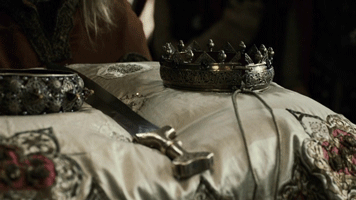
Kristina Pérez is a half-Argentine/half-Norwegian native New Yorker. She has spent the past two decades working as a journalist and academic in Europe and Asia, and has a PhD in Medieval Literature from the University of Cambridge. Sweet Black Waves is Kristina’s debut YA novel, out June 5th, 2018 from Imprint/Macmillan. This lush fantasy of warring countries and family secrets is the first in a trilogy inspired by the star-crossed tale of Tristan and Eseult.
Website*Twitter*Instagram*Facebook *Pinterest *Goodreads*Pre-order Sweet Black Waves! *

¡Qué bonita bandera! AKA what heritage(s) do you claim?
Cuban-American.
When was the first time you saw yourself represented?
As a Cuban-American child, I never saw myself represented in any children’s books. As an adult, the first time I recognized the Cuban-American experience in a book for young readers was when I read Alma Flor Ada’s beautiful memoirs, Under the Royal Palms, and Where the Flame Trees Bloom.
How do you connect to your heritage through your books (if at all)?
Most of my books are about Cuba or Cuban-Americans. Sometimes I branch out to other topics that interest me as a scientist, but in general, my passion for writing is connected to my childhood visits to relatives in Cuba, and to return trips as an adult.
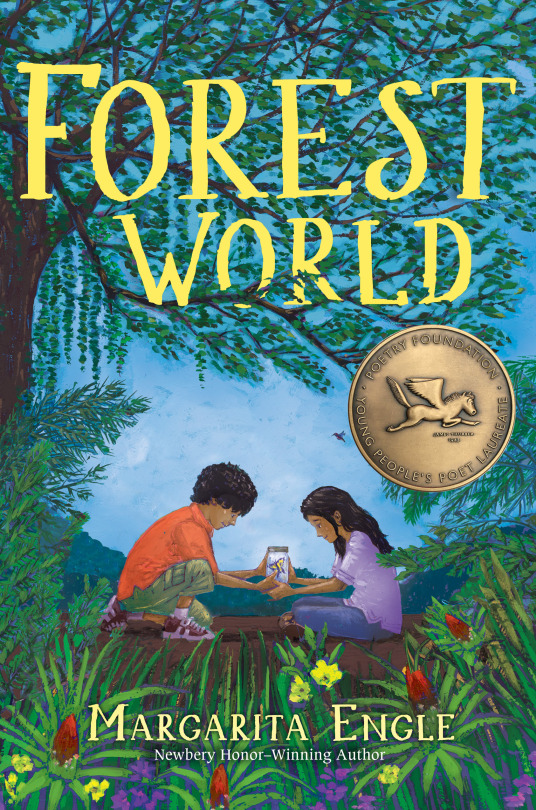
What do you hope for the future of Latinx books?
I hope that more #OwnVoices Latinx books will cross borders, helping young readers learn about the whole world, not just our own neighborhoods.
What is the book that inspired you to write for kids/teens?
Under the Royal Palms, by Alma Flor Ada and Carver, by Marilyn Nelson, inspired me to experiment with the verse novel form.
What are you writing now?
I’m working on biographical and scientific poetry picture books, and verse novels about some of the great Latin American poets of the early 20th century.

Margarita Engle is the 2017-2019 national Young People’s Poet Laureate, and the first Latino to receive that honor. She is the Cuban-American author of many verse novels, including The Surrender Tree, a Newbery Honor winner, and The Lightning Dreamer, a PEN USA Award recipient. Her verse memoir, Enchanted Air, received the Pura Belpré Award, Golden Kite Award, Walter Dean Myers Honor, Lee Bennett Hopkins Poetry Award, and Arnold Adoff Poetry Award, among others. Drum Dream Girl received the Charlotte Zolotow Award for best picture book text.
Her newest verse novel about the island isForest World, and her newest picture books are All the Way to Havana, and Miguel’s Brave Knight: Young Cervantes and His Dream of Don Quixote.
Books forthcoming in 2018 include The Flying Girl, and Jazz Owls, a Novel of the Zoot Suit Riots.
Margarita was born in Los Angeles but developed a deep attachment to her mother’s homeland during childhood summers with relatives. She was trained as an agronomist and botanist. She lives in central California with her husband.
Website*Twitter* Poetry Foundation*Buy
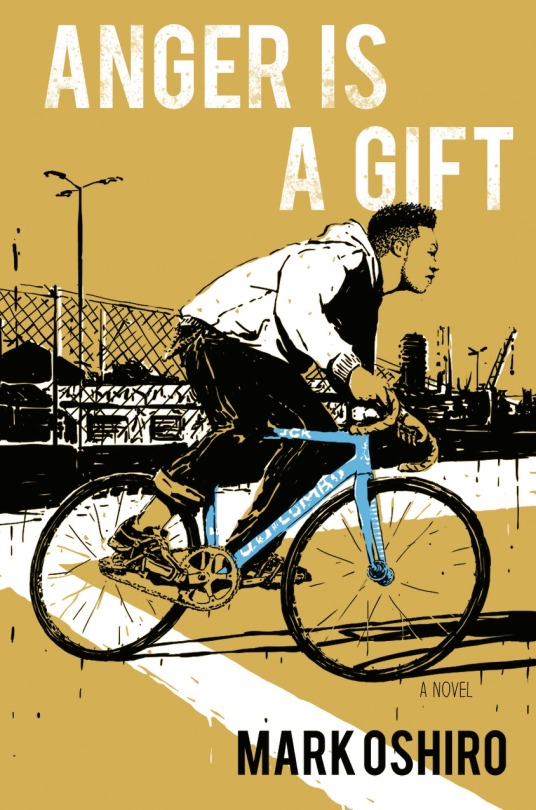
¡Qué bonita bandera! AKA what heritage(s) do you claim?
I identify as Latinx these days, but it’s actually a complicated answer. I grew up identifying as either Mexican, Chicano, or Latino. I’m a transracial adoptee, so all I knew about my biological parents was that my dad immigrated from Mexico and then left soon after I was born. I did one of those DNA tests in my late 20s and discovered that I was mostly Salvadoreño and Guatemalan, but I felt strange identifying with that heritage since it had not been part of my upbringing. Latinx feels right to me, both as a political statement and to describe who I am. I am brown and proud!
When was the first time you saw yourself represented?
The not-so-great answer: Speedy Gonzales. My twin brother and I loved him. The actually-great answer: The House on Mango Streetby Sandra Cisneros, which I read for my freshman year English class. I was 14 years old, and it changed my life forever.
How do you connect to your heritage through your books (if at all)?
I wrote a transracial Latinx adoptee into Anger is a Gift to explore the complicated issues of heritage, race, and identity. She’s not the protagonist, but plays a huge part in the life of my main character. My second novel (currently untitled) is a Latinx-inspired/influenced magical realism/horror story that takes place in a desert society and deals with migration. It is a much more intense exploration of my heritage, especially since I literally would not exist if my father had not immigrated from Mexico to California.
What do you hope for the future of Latinx books?
I want so many different types of stories! I want those of us in the Latinx community to explore all the issues we face; I want us to be able to celebrate our culture and share it with others, but with us at the helm. Ultimately, I want Latinx people telling Latinx stories.
What is the book that inspired you to write for kids/teens?
There are quite a few, but The House on Mango Streetis always going to be my first answer. That book showed me that stories could be about people like me, could be set in places that looked like where I lived and could be about things that affected my life. I am also massively inspired by Octavia Butler,Ursula K. LeGuin, and the Animorphs series (DON’T JUDGE, THOSE BOOKS ARE GREAT AND MESSED UP).
What are you writing now?
My YA debut, Anger Is a Gift, comes out May 22, 2018; I’m currently hard at work at a magical-realism-meets-horror standalone set in a desert. You can read an excerpt here:click!

MARK OSHIRO is the Hugo-nominated writer of the online Mark Does Stuff universe (Mark Reads and Mark Watches), where he analyzes book and TV series. He was the nonfiction editor of Queers Destroy Science Fiction! and the co-editor of Speculative Fiction 2015, and is the President of the Con or Bust Board of Directors. When not writing/recording reviews or editing, Oshiro engages in social activism online and offline. Anger is a Gift is his debut YA contemporary fiction novel.
